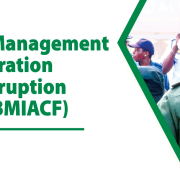|
Getting your Trinity Audio player ready...
|
Health sector corruption is a long-standing concern for Corruption Watch. As a member of the Health Sector Anti-Corruption Forum (HSACF), which is chaired by the Special Investigating Unit (SIU), we represent civil society in this collaborative effort, with law enforcement agencies, health sector regulators, government departments and private sector, to fast-track investigations of fraud and corruption in the health sector and contribute to the measures to prevent corruption, fraud, waste, and abuse.
The HSACF’s intervention is sorely needed because for patients needing care, corruption can literally tip the scales between life and death. Think of the employee who steals medication from a hospital to sell privately for his/her own benefit, depriving patients of a vital, possibly life-saving treatment. Think of the elderly woman who is asked for a bribe before she can see a clinic practitioner, leaving her the choice between paying the bribe for the consultation or being able to buy the medicine that she needs.
Imagine the millions of rands spent on fraudulent medico-legal claims awarded to non-existent or undeserving claimants, which could be spent on improving health services. What about the tenders won or awarded illegally, where officials look for kickbacks and suppliers are only interested in lining their own pockets rather than helping people to access the services to which they are entitled? How about counterfeit drugs, which can not only hasten death but can facilitate the spread of drug-resistant organisms?
All these corrupt practices, and a host of others, lead to increased costs and decreased quality of services, equipment, and healthcare delivery, while the many healthcare workers who are committed to their work become more frustrated and demoralised.
A new Health Beat video report by health journalism centre Bhekisasa highlights the problem of curbing corruption in the public healthcare sector.
“Fraud and corruption … tear communities apart and damage democracy,” says Bhekisisa founder Mia Malan, introducing the segment in Health Beat 17. “This often leads to the redirection of public funds and bad service at public institutions.”
In the healthcare system, patients are the victims, Malan adds.
Hospital of death
The report starts with a visit to Tembisa, whose hospital became notorious as the centre of large-scale corruption that ultimately resulted in the violent death of whistle-blower Babita Deokaran, an accountant working in the Gauteng health department.
Tembisa Community Forum member Xolani Mnisi says ensuring people get the health services they need is a forum priority. “We are not entirely happy. That’s the reason why last year we marched to the Tembisa hospital to send a memorandum of grievances from Tembisans.”
The hospital serves about 2-million people from the community and from surrounding areas such as Diepsloot. Mnisi says it is severely under-capacitated. “Doctors deal with a high number of patients, very much affecting how service is given to the patient.”
However, he says, staff are trying their best in difficult circumstances – of which government is aware. “We expect government to do something about it.”
News24 investigative journalist Jeff Wicks, who investigated Deokaran’s murder, agrees. “People receive parlous treatment in public hospitals because of resource constraints. This is the same hospital where a man starved to death because the nurses forgot to feed him.”
In September 2023 the Special Investigating Unit, under presidential proclamation 136 of 2023, began its probe into maladministration at the hospital. This came too late for Deokaran, who uncovered irregularities pointing to companies with no public presence, that were getting tens of millions of rands worth of business in quick succession. Not long after reporting her discovery, she was gunned down.
The same suspicious companies, says Wicks, were also getting contracts from at least five other health facilities in Gauteng – pointing to systemic irregularities.
Corruption from the top
Alex van der Heever of the Wits School of Governance says top-down corruption is the most insidious of all.
“Corruption organised from leadership level is really the one that has a systemic impact on the performance of the health sector or any facility … allows them to essentially establish networks of corruption, making it much more difficult for accountability structures to operate.” Such people make decisions about procurement in their own private interests, not in the public interest, adds Van den Heever.
Besides the money and other valuable resources that get lost, he says, this effectively collapses the effective delivery of health care services across the board.
Van den Heever is sceptical about the HSACF’s ability to put the brakes on health sector corruption, but concedes that the key vulnerability is created by allowing political appointments into public administrative structures, which may give criminal syndicates a way in.
He is frustrated by the lack of successful punitive action against implicated parties, pointing to the Digital Vibes scandal as an example. Implicated persons in that scandal are still at large, despite evidence provided back in 2021 by the SIU following an investigation.
“It’s inexplicable that with the levels of evidence that we have against this very serious top-down corruption in South Africa, they’re unable to prosecute anyone. The National Prosecuting Authority quite clearly isn’t doing its job, and the Hawks are not doing their job.”
NHI alarm bells
Given the levels of corruption in the current healthcare system, the potential for the same in the National Health Insurance (NHI) scheme, due for rollout over the next few years, is ringing loud alarm bells.
However, there are built-in checks and balances – for instance, the proposed NHI fund will be run by a central board which will establish internal units to prevent and detect fraud, with guidance from the HSACF. But will they be enough?
Corruption Watch board member Zukiswa Kota, from the Public Sector Accountability Monitor at Rhodes University, says this may make oversight easier on the one hand – but adds that where there are fewer people responsible for oversight, opportunities arise for corruption and misuse of power.
Asked what measures must be put in place to curb tender corruption, Kota echoes what Corruption Watch has said for years. “Information around tenders must be published in an accessible format online on centralised platforms – at the moment that simply is not happening to the degree that is necessary. There’s a lot that is hidden.”
This blocks the way for people who want to understand how such processes work – which is their right. “For example, are ARVs being provided at the correct price in timely ways by companies that aren’t blacklisted? It will be very difficult to find that very important information.”
For the NHI to ensure that tenders are awarded to the best candidate, says Kota, there are various steps that will guide towards this outcome. One of these provisions is set out in section 40 of the NHI Bill.
“This section requires the NHI fund to establish an information platform to enable it to make informed decisions on population health needs assessments, financing and purchasing, patient registration, a whole range of things. One of the things that can be done to improve this clause of the proposed bill is that this information should be drawn from a variety of sources … because we know that there’s a need to involve a broader range of expertise, of demographics.”
Another important step, Kota says, is that oversight should involve civil society and healthcare users. The involvement of stakeholders such as civil society organisations has been shown to limit fraud within supply chain management processes, she says.
Access to information is critical, says Kota, for anyone – not just those with law or medical degrees. As an ordinary person, “I should be able to go online and find the information that tells me who is doing business with the state, but also more importantly, what is being delivered or should be delivered.”
Corruption thrives where there is complexity, Kota concludes. “At present this complexity works against transparency.”







